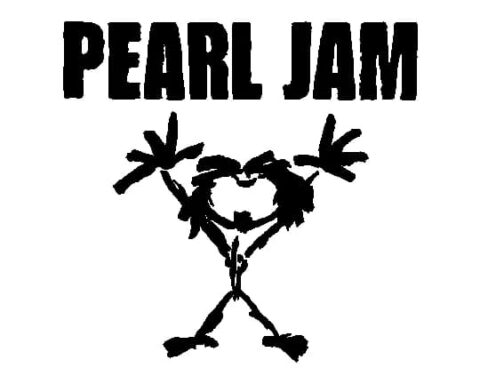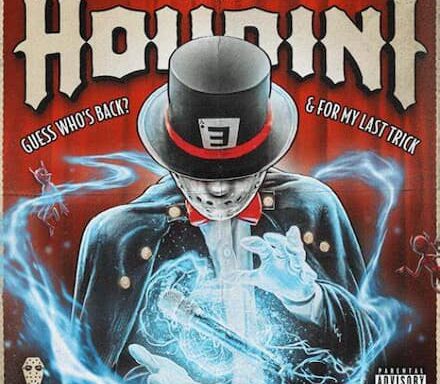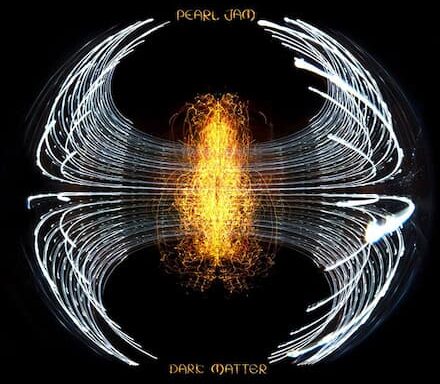It so happens that so many of the albums made 20 years or so ago are so worth commemorating; and happened to be the primary influences on me both as a music fan and as a musician. The album Above by Mad Season happens to have been one of those.
Above is particularly extraordinary for a bunch of reasons. For one thing, it was the only album made by Mad Season.
For another, Mad Season was only supposed to be a minor side-project to give a group of troubled musicians something to focus on after emerging from spells in rehab: but it ended up being a major piece of work that is beloved and remembered by legions of fans even two decades later.
While it isn’t as consistent as to necessarily qualify as a great album in the strictest sense, what it has are extraordinary moments of greatness. In other words, it isn’t great throughout, but it when it does hit the mark it is astonishingly great.
The story behind the album is well known to music fans of that era.
After Pearl Jam guitarist Mike McCready and Journeyman bass player John Baker Saunders met at rehab and decided to form a band, they brought in Alice in Chains’ frontman Layne Staley. Recruiting Staley for the side project wasn’t just for his inimitable vocal talent: they also thought he would benefit from being around clean musicians for a period of time and that it might help him get his act together.
During the production process of Pearl Jam’s 1994 Vitalogy album (released in the shadow of Kurt Cobain’s suicide and a follow-up to what was at the time the fastest-selling album of all-time), McCready went into rehab in Minneapolis, Minnesota, where he met bassist John Baker Saunders. When the two of them went back to Seattle, they decided to form a side project with Screaming Trees drummer Barrett Martin.
Once they were already rehearsing and starting to write material, McCready sought out his friend Layne to front the outfit. According to McCready, the entire process was very simple. They simply started jamming and everyone had ideas; everything happened in just a few days.
With the pressures of their respective mega-star acts, Layne and McCready in particular must’ve felt Mad Season was a welcome change of pace.
Despite Layne’s joining the group via rehab and despite the process of getting clean, the name ‘Mad Season’ refers to a term for the time of year when psilocybin mushrooms are in bloom.
Yet Above is by no means a ‘druggie album’ – completely to the contrary, it is a lucid, focused collection of songs. Layne Staley also did the album artwork on the cover himself.
Martin had later said, “Layne Staley felt as though he was on a spiritual mission through his music. Not a rock mission, a spiritual mission.”
If true, this is perhaps most evident on the song ‘River of Deceit’.
‘River of Deceit’ was the first single released from the album. The lyrics, written by Staley, were inspired by the book The Prophet by Lebanese artist, philosopher and writer Khalil Gibran, originally published in 1923.
It is a beautiful, bittersweet piece of music; yes, slightly reminiscent of early Pearl Jam in McCready’s guitar work (a hint of ‘Yellow Leadbetter’ perhaps), but really given extraordinary life by Staley’s rich, sonorous vocal. ‘River of Deceit’ really does come across like a poem set to music, as though the words came first – even though it was probably the other way around.
It is remarkably bare sounding and vulnerable, but incredibly sweet and haunting; and in a world where more people were more familiar with real music and not charts or talent shows, something like ‘River of Deceit’ would be a universal classic.
While some of the music does echo Alice in Chains and Pearl Jam to varying degrees, the view that Mad Season is ‘a cross between’ PJ and AIC is generally misguided. A perfect example is the hauntingly brilliant ‘Long Gone Day’, which doesn’t really sound like either band.
‘Long Gone Day’ is an epic, brooding, mesmerising composition, effortlessly fusing elements of blues, jazz and progressive rock. The track is hypnotic and is so evocative that it sounds like it should have an accompanying film. The presence of Screaming Trees’ Mark Lanegan, sharing vocal duties with Staley, imparts the song even more weight and gravitas (giving us two immense vocal talents in one delicious track), while Barrett Martin’s exotic, pacifying percussion and the beautifully measured xylophone use and saxophone solos were one of the album’s most pleasant surprises the first time.
‘Long Gone Day’ is the track I immediately think of when I think of Above; it seems to capture so much mood and spirit and ride so many ineffable, divine currents. Really, a masterful composition of transcendent musical brilliance.
This track alone would’ve made the album entirely worth buying: thankfully, however, it isn’t the only stunning track.
‘Wake Up’ more than anything else acts as a showcase for Layne’s extraordinary rich voice. It is a spellbinding, goosebump-inducing track, the music stripped to bare minimum while Layne’s amazing vocals take center stage and dominate the affair. I’m not sure there’s even any Alice in Chains song that is this stark and gives Layne this much prevalence in the mix (maybe ‘Am I Inside’ from the 1992 Sap EP); to the extent that a guitarist as potentially trigger-happy as Mike McCready really does hold back throughout, limiting himself to some strategic guitar work to play with the mood rather than draw attention.
‘Wake up, young man, it’s time to wake up…’ Layne begins, taking us on an evocative, brooding journey. Again, Layne’s vocals are so good, so haunting, here – and the feeling so intimate – that you feel like you’re in a small room watching him. This track has always given me a shiver and effected me emotionally, for its sheer, stark and haunting beauty.
‘I’m Above’ is also another awesome number; laid back but utterly perfect and totally addictive, it is probably the most straight ‘grunge’ composition on the record. Tempo and composition wise, it has a bit of a Screaming Trees feel to it, particularly on the verses; though it shifts into more Cobain-like territory on choruses. It also makes use of the classic Staley/Cantrell Alice in Chains dual vocal harmony technique, except here it is Mark Lanegan joining Staley – the effect is fabulous, particularly on the over-powered choruses. McCready’s little Spannish-like guitar work on the second verse reminds us that he’s still there too.
Those four are the standouts on the record; the songs that give Above that extra elevation to a divine level. The rest of the album is less outstanding, but mostly solid.
The Nirvana-esque ‘I Don’t Know Anything’, with its driving riff and dominating harmonics, is pretty straightforward, but bad-ass. The unselfconscious jam-fest of ‘November Hotel’ makes more sense when you watch it played live at the Moore Theatre show and reminds us that this was essentially a cathartic form of therapy meets jam and not a considered, thought-out album project.
And ‘X-Ray Mind’ is a melodious, near-perfect composition that, more than anything else on the record, can be said to be a great synthesis of Alice in Chains, pre-Vitalogy era Pearl Jam, and the Screaming Trees; McCready’s main riff definitely sounds like it could be something off of Ten or Vs, while the Staley-led vocal track could fool you into thinking Jerry Cantrell is also on it.
‘Lifeless Dead’ and ‘I Don’t Know Anything’ were first premiered on Pearl Jam’s Self-Pollution satellite radio broadcast in 1995 (a four-and-a-half-hour pirate broadcast out of Seattle). ‘Lifeless Dead’ has a killer riff, but doesn’t really go anywhere and feels like an unfinished idea; but it is perfectly listenable anyway.
Not every track is magic. ‘Artificial Red’ is pretty pointless; but for an album that was knocked out very quickly and songs that were written off-the-cuff, that is somewhat to be expected. Some of the album certainly feels like a quickly made record flowing out of extended jams. But that’s not a bad thing; and it gives the record a distinct flavour and identity.
What is extraordinary, given that spontaneity and speed of the process, is just how brilliant tracks like ‘Long Gone Days’ and ‘Wake Up’ actually are. They really are stunning songs that really feel like meaningful, resonating moments in time.
___________
However troubled or plagued the band members may have been by their own personal problems, they came together for a moment in time to create some wonderful, resonating music. In fact, ‘a moment in time’ feels like the best way to sum up Mad Season and Above: a rich, resonant moment in time that echoes long beyond itself. And the fact that it possibly produced two or three of the very best pieces of music from that insanely rich musical scene and era is no mean feat – given just how much great music was being made in that period.
Efforts to record a follow-up to Above in 1997 never amounted to anything, just as Alice in Chains never really got going again with Layne after 1995’s Dog Album.
Saunders died of an OD in 1999, and Layne Staley of course died in oppressively bleak circumstances in 2002. One of the many things Above always reminds us of is how much of a musical life Layne could’ve had even outside of Alice in Chains – how that immensely powerful and disarming voice could’ve found expression in all kinds of other ways too.
The Live at The Moore performance in Seattle, Washington, on April 29th 1995, also stands for all time as the only Mad Season concert with Layne Staley. It’s a compelling show. Layne’s performance is, in all honesty, a little below par (possibly for obvious reasons) and he looks and sounds like someone of diminishing powers even here in 1995; but the setting is relatively intimate and there’s a low-key, downbeat muso/jam vibe to the whole thing that in some ways makes it more compelling than a more pronounced, managed ‘show’ would be.
Mark Lanegan also joined the band onstage for an immaculate live rendering of ‘Long Gone Days’, which is the highlight and is probably just as good as the album version.
Marking the 20th anniversary of the record, some of Seattle’s eminent musical figures also teamed up with the Seattle Symphony last year as a tribute to Mad Season. The outfit’s surviving contributors, Mike McCready and Barrett Martin took part, but were also joined by Soundgarden’s Chris Cornell, Soundgarden/Pearl Jam drummer Matt Cameron, Pearl Jam’s Stone Gossard and Jeff Ament, and Duff McKagan of Guns N’ Roses, Velvet Revolver and Walking Papers.
A deluxe edition of the album was also released in 2013, with a lot of additional material, including a very cool cover of John Lennon’s ‘I Don’t Wanna Be a Soldier’.





Happy new year my Earthling friend! 🙂
And to you, my Otherworldly Chum 🙂
🙂 Why some of your posts are not seen on the reader part of wp? This is one of them my Earthling friend. It’s only email notice.
I don’t know, friend. Maybe because I back-date some of my posts to earlier in the year. Because I write a lot of posts that sometimes I forget to publish, I usually come back and publish them to their original dates. This post, for example, I just ‘published’ at the end of the year, but I dated it back to the beginning of the year because that was when I originally intended to post it.
Does this make sense?
Hmmm, so you had written these already but you’ve saved without publishing, after then you kind of revitalized. Possible it makes sense. Well, if we would write a post and save it, is there a setting that can publish by itself at future, like sending a new year’s ecard, can be sent on the date which was arranged before? Do you know any setting on wp for this?
Yes, on my WP you can schedule your posts by date. I do that all the time. You can schedule a post for any time in the year – either forward or backward. But it can only be within that same year.
Thank you for giving information my Earthling friend!